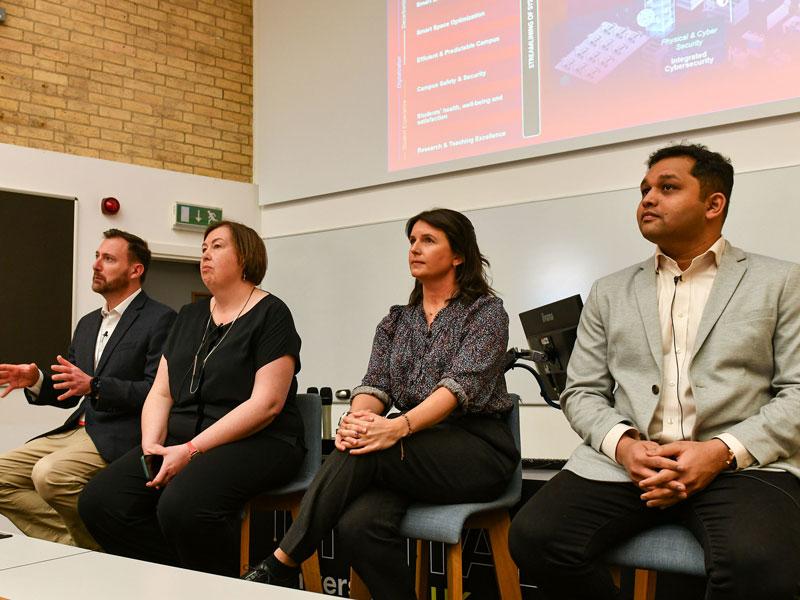As campuses become more digitally connected, the way they are managed is also evolving. Where once estates teams might have performed an annual physical space survey to see how students and staff use the campus, smart technology and data sources such as wi-fi points can provide a richer and more dynamic picture. During a workshop session, held in partnership with Siemens at the 2025 THE Digital Universities UK event, senior leaders from the higher education sector discussed how universities can optimise their estates using technology.
“We can look at peak utilisation and see what devices are in use, meaning we can refresh spaces with fewer devices,” said Gareth Stears, director of digital services at Canterbury Christ Church University. His team is working on digital wayfinding by making maps easily available to staff and students, which has streamlined campus navigation. Joining systems together allows students to link timetable events with locations and enables staff to track physical objects using sensors.
Anna Cockman, head of estate development (project delivery) at Lancaster University, said that digitisation supported how the university handled hybrid teaching and working. “Students want in-person delivery. They benefit from social interaction and learning from their peers and being in the same room as their lectures, but they can also revisit the information through lecture capture technology,” she said. “However, the way people learn and live now is not as space hungry. They can learn in a more efficient way to suit their needs.” Having study space booking systems enables staff and students to book spaces digitally. Optimising physical space within the university library has freed up room to support collaborative working and different learning styles.
To achieve the benefits of a more digital campus, building a good partnership between IT and estates teams is crucial, said Leejo Johney, head of digital estates at the University of Exeter. “We try to use outcome-focused language, rather than technical or functional requirements. What does the student want or what do the staff want and how do we want this building to operate? That means we can translate the technical requirements back to IT,” he said. “We have enabled the estates team to build a culture of sharing information. It’s important to start with the basic foundations of space and asset data – and get a common language in place that enables multiple systems to talk to each other.”
Siemens Smart Infrastructure has been working with campuses globally on the challenges they face in “doing more with less”, said Faye Bowser, vice-president of higher education at Siemens. “In Boston in the US, for example, estates have grown by more than 20 per cent, but enrolment by just three per cent and the workforce is shrinking,” she said. Siemens works with universities to identify how they can stay competitive and resilient with the flexibility to adapt to the world changing around them.
The starting point is looking at what technology universities already have in place and the insights they can draw from this, Bowser said. The next step is looking at how systems can be integrated for more sophisticated outcomes and potentially upgrading estates with emerging technologies. Smart campuses should align with institutions’ net zero strategies, she added. “We are interested in pushing the boundaries to understand how far we could go to have an autonomous eco campus using proven and emerging technology. It’s about using technology in a way to see how much learning environments can learn, adapt and adjust without human intervention,” Bowser concluded.
Find out more about Siemens.


comment